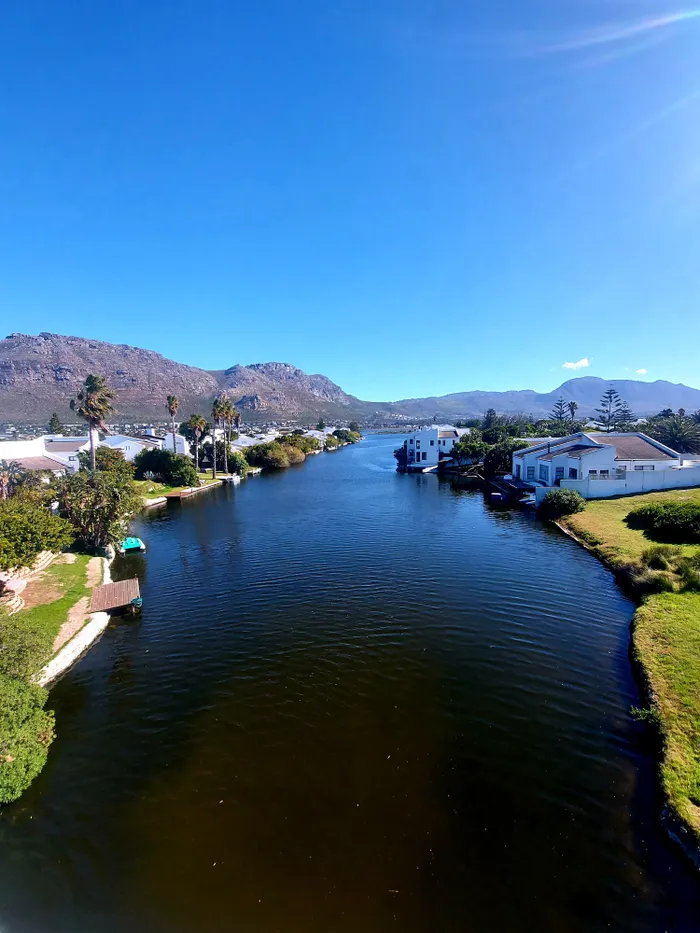Zandvlei water quality results a shocker

Marina da Gama waterways are severely polluted.
City water-quality results have confirmed that Zandvlei is seeing pollution spikes hundreds of times higher than levels considered an acceptable risk to public health.
The vlei has been closed to the public for the past four months.
The water-quality data was presented at the the City of Cape Town’s water and waste portfolio committee meeting on Thursday September 2.
The City calls measurements of more than 4 001 colony-forming units (cfu) of E coli per 100ml an “unacceptable risk” to public health. E coli is a kind of bacteria found in human faeces.
When Zandvlei was closed to the public on Tuesday May 25, a sampling in the northern section of the vlei showed a reading of 8.3 million cfu/100ml.
Results from sampling points across the vlei have fluctuated dramatically since, but remain well over the acceptable limit.
Sampling point ZA025, opposite the Imperial Yacht Club, showed a result of 200 000 cfu/100ml on Thursday July 8.
At sampling point ZA105, which is the Westlake Wetland opposite Rutter Road, on June 1, the reading was 96 000 cfu/100ml.
On Monday, August 23, the northern area of the vlei at sampling site ZA01, showed a reading of 430 000cfu/100ml.
Marina da Gama resident, Charles Whaley, is a spokesman for the “Save Zandvlei Nature Reserve for the People of Cape Town” petition, which he and other Marina da Gama residents Mike Ryder, Ross Devenish and Gregg Higgins started in April this year (“Petition takes City to task over Zandvlei pollution,” False Bay Echo, April 16). He said he was relieved that the extent of the pollution was being shown far and wide. He pointed out that these results were just for Zandvlei, and that other water bodies, such as Zeekoevlei, Rietvlei and the Milnerton Lagoon, had all been battling ongoing pollution problems.
“The results vindicate our campaign - we were right to be concerned. And we were right to make a fuss. And we will continue to make waves until the problem is solved. It's not just for us, it's for the future," he said.
Mr Whaley said his concerns about water quality locally had led him to be in touch with campaigners all over the peninsula.
“The city will have to come to terms with the fact that it doesn't just have a Zandvlei problem, it has a city-wide problem with all the water bodies in the Cape. There is a growing movement to hold our politicians and city officials to account. And we will hold them to account,” he said.
Microbiologist Dr Gerry Norris (“Microbiologist remembers vlei of paradise,” False Bay Echo, May 13) said the figures were difficult to get one’s head around.
Xanthea Limberg, mayoral committee member for water and waste, said that while water-pollution trends at Zandvlei were coming down steadily, sampling-point results were still above the accepted limits, especially in the northern area.
Responding to ongoing criticism from residents of Marina da Gama who launched the petition, she said that while transparency was a key component of the City’s water strategy, the City also needed to make sure that data was correctly interpreted and contextualised before being disseminated to the broader public.
Zandvlei Nature Reserve manager Kyran Wright has said on record that the sample readings needed to be correctly interpreted. The False Bay Echo asked Mr Wright to interpret this data, but we got no response from him.
More than 6300 people from across Cape Town have signed the petition, calling for transparency and better water quality measures. The petition's numbers are still growing.
Ms Limberg said the City preferred to make available water-quality trends instead of short-term water-quality data, which, she said could show sharply varying conditions from day to day at different sampling points.
However, she acknowledged the petitioners’ call for details, saying Capetonians had voiced an increasing desire for scientific findings to be shared. "The City has heard this call and is working towards establishing a means for making these highly complex data sets available in an accessible format," she said.
The City had communicated clearly and pro-actively regarding the pollution at Zandvlei and about the need for the water to recover to acceptable levels before the water bodies could be reopened to the public, she said, adding that the City had established a water quality improvement programme and devised action plans to tackle sources and causes of pollution.
City’s Inland Water Quality Report covers historic water quality trends in the major rivers and open water bodies in the city and focuses on the five-year period from April 2015 to March 2020. A summary of the report is available at http://bit.ly/CCT-InlandWaterQuality2019 or visit www.capetown.gov.za/ThinkWater for the full report.
